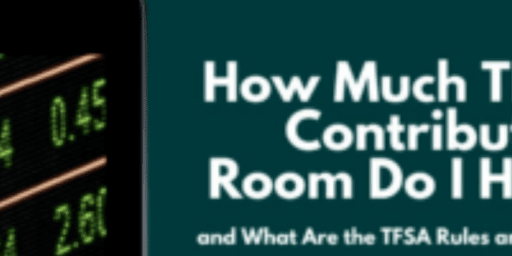Multiple Credit Card Strategy in Canada
So, you want to get a new credit card, but you’re worried about whether it’ll hurt your credit. We have good news: lots of people have multiple credit cards and it doesn’t hurt their credit at all.
However, the more cards you have, the more you’ll need to keep track of.
This article lays out everything you should consider when you’re looking to get a new credit card. We discuss the most important factors that determine your credit score, the pros and cons of having multiple credit cards, plus tips and tricks that will help you stay on top of things. Then we finish up with some advanced credit card strategy and a few suggestions for top-notch combinations using the best credit cards in Canada.
By the time you’re done reading, you’ll know whether having more than one credit card is right for you, have a good idea of where you want to start, and know how to proceed without getting yourself in a big credit-ruining mess.
Credit Card Strategy: How Many Credit Cards Should You Have?
Whenever the question of multiple credit cards comes up, you’ll find someone asking, “How many credit cards is too many?” And it may surprise you to know that there isn’t a magic number. Credit bureaus aren’t as concerned with the number of cards you have, so much as with other factors including:
- Whether you pay your bills on time (this is a huge one!)
- How much debt you’re carrying vs how much credit you have (it’s called a credit utilization rate—we’ll get into it in a minute)
- How old your cards are (credit bureaus like it when the average age of your cards is older because it means you’ve been borrowing for a while)
- Whether you’ve applied for a whole bunch of cards all at once (they don’t like it when you do).
It’s not a question of whether having more than one credit card is good or bad – what counts is how you use them. Some people do best with one or two credit cards, while other people can juggle 4 or 5 with no problem. It all depends on your financial habits and how good you are at keeping track of your accounts.
Credit Utilization Rate: Is a Zero Balance the Best Idea?
You hear it all the time, both here and on other sites: “Make sure you pay off your balance(s) in full each month!” But is a zero balance on all cards really the best way to go? Or is it bad to have a lot of credit cards with zero balance?
It may surprise you to learn that a zero balance may not be the absolute ideal when it comes to your credit score. Some experts say that, while a zero balance is good, a small (very small) balance may actually be better.
A credit utilization rate (or credit utilization ratio) is the percentage of debt you carry vs the total amount of credit you have. When interviewed by CNBC for their article about credit utilization rates, credit card counselor Jim Droske explained that credit bureaus may view a rate of 0% (meaning zero balances on all your cards) as an indication that you’re not using the cards at all – and that can make you seem like a bigger risk to lenders.
A typical rule of thumb is to keep your credit utilization rate no higher than 30%, so if you have a $10,000 combined limit on your credit cards, you would want to keep your combined balances at no more than $300. Lower than that is also excellent – a 10% balance or even a 1% balance shows the bureaus that your cards are being used and your debt is being kept under control.
Our “only make purchases you can pay off” advice is still good, though. You should always be intentional about your purchases and never let them get out of control. That’s the best way to keep your credit utilization rate low and the credit bureaus happy. This is especially true when you’re juggling multiple cards.
Should You Get a New Credit Card? Pros and Cons of Multiple Credit Cards
When you consider whether to get a new credit card, you should give some thought to the pros and cons of multiple credit card usage. Do you feel like the benefits of having 2+ credit cards outweigh the disadvantages? Take a look for yourself:
Pros of multiple credit cards
- More available credit (and ideally a lower credit utilization ratio)
- Optimized rewards earning: you have more options for earning points and bonuses—we’ll get into some good combinations later
- Have a credit card for every situation: more than one brand of card means you’ll always have a high-earning card on deck, even if the store only accepts one kind of card (looking at you, Costco)
- Racking up the sweet, sweet welcome bonuses that become available from time to time – especially on premium cards
Cons of multiple credit cards
- The temptation to use more credit because you have it available
- Multiple bills/payment dates to keep track of means a greater risk of missing a payment (and tanking your credit score)
- If you apply for too many cards in quick succession, it makes you look like a risk to lenders and can affect your chances of getting big loans like a mortgage or car financing
- Multiple fees: if more than one of your cards charges an annual fee, you may find yourself out more money annually than you can earn back with rewards. It’s important to keep an eye on the math here!
Credit Card Strategy: Tips and Tricks for Multiple Credit Cards
There are lots of strategies for handling multiple credit cards. Here are a few of the most important ones:
- Know your habits
Do you often carry a balance? Do you often pay late? Do you have trouble keeping yourself from using available credit? Multiple credit cards may not be for you (and that’s OK!)
2. Don’t have more cards than you can pay off each month
Even if you’re planning to carry a small balance, you still want to have the ability to pay them off if you need to. Don’t let that balance grow out of control!
3. Be patient
Welcome bonuses change regularly. Sometimes you can get a much better deal if you’re willing to wait.
4. Try for free
Sometimes (often) a welcome bonus will include waiving an annual fee. These are great opportunities to try out a card without paying a cent.
5. Read the fine print
Make sure you don’t get distracted by a flashy deal. Read the fine print – If that welcome bonus seems too good to be true, it may require significant spending to earn the bonus.
Is the earn rate spectacular? Make sure there’s not a spending cap that’ll trip you up. Do your points expire? Keep track of them!
6. Build your collection slowly and deliberately.
Don’t apply for a bunch of cards at once. One every 6 months is generally recommended. Choose carefully and make sure you pick cards that will work with your spending habits.
7. Game the spending categories to maximize your rewards
One tactic is buying gift cards for a store that’s not in a high-earning spending category from one that is (like buying a Best Buy gift card at a grocery store or gas station). Make sure you check the fine print first to be sure that your credit card doesn’t exclude gift cards from gas or grocery category purchases.
Also check with the store to make sure that they’ll let people pay for gift cards with a credit card (some won’t). This can be a great way to maximize a welcome bonus – just do your research first!
8. Make big purchases on your credit cards and then pay them off immediately
This is self-explanatory – funnel any significant spending through your credit cards to earn points on things you’d be buying anyway.
Credit Card Strategy: Credit Card Churning Advice
Credit card churning is a strategy that some people use to maximize rewards and take advantage of as many welcome bonuses as possible. Cardholders sign up for multiple credit cards to take advantage of their welcome bonuses… and then close them once the bonus perks run out.
It’s true that credit card companies often offer generous welcome bonuses to entice people to sign up – but it’s easy to mess up this tactic. Here are some pointers (and warnings):
Be organized
Keep a running list of cards with good deals and the date those deals expire, as well as their annual cost (if applicable).
Focus on the rewards you want
There are hundreds of cards on the market with dozens of reward programs, and it can be a lot to keep track of. You’ll do better if you stick with a smaller selection of rewards.
Look for free cards or waived fees
When you’re juggling lots of cards, the last thing you want is to end up also juggling lots of fees.
Take it slow
Too many credit checks in a short time will raise a red flag with the credit bureaus. It’s important to space out your applications.
Read the fine print
Many welcome bonuses aren’t available to cardholders who have had the card in the past and then closed the account. Also, some bonuses are only available after a significant amount of credit card spending. It’s all essential information, so don’t skip this step.
If it seems like a number of these credit card churning pointers are similar to the general advice for multiple credit card holders, it’s because they are – they’re just even more important if you’re going to be churning your cards.
There are lots of sites out there with detailed strategies for churning credit cards and we recommend researching tactics thoroughly before you start out. There’s a whole credit card churning culture out there to discover if you’re interested in giving it a try.
Our stance on churning is simply this: if you’re going to do it, be informed and be careful. If you don’t pay enough attention, you can mess up your credit and get yourself in a financial hole… but if you’re on top of things, it can absolutely be worth it!
How to Build an Effective Credit Card Portfolio
We’ve already advised you to fully investigate a card before adding it to your collection. You don’t want too many cards with annual fees, anything with rewards you won’t end up using, or multiple cards that do exactly the same thing. The best two (or more) credit card strategies are to think about your portfolio as a whole and build it deliberately so it works for you.
Here are some ideas:
Maximize your cashback
If you’re not really into travelling, or if you find points confusing, consider a collection of credit cards that maximizes your cashback earning potential without costing you too much in annual fees. Here’s an example:
1. Scotia Momentum Visa Infinite
The Scotia Momentum Visa Infinite gives you 4% cashback on groceries and recurring payments and 2% cashback on gas and daily transit. Depending on when you sign up, you may also receive a promotional cashback rate for a few months.
The Scotia Momentum Visa Infinite has an annual fee of $120, but it’s currently waived for the first year. You can learn more by reading our Scotia Momentum Visa Infinite Review.
2. Neo Financial Credit Card
The Neo Financial Credit Card (a Mastercard) offers up to 6% cashback at Neo partners and 1% cashback everywhere else. There are thousands of partners both online (think Netflix and Spotify) and in your area (including local shops and restaurants as well as national chains like Shoppers Drug Mart, Chapters, Canadian Tire, and the Dollar Store).
This makes it a perfect complement to any cashback card combination—keep it in your wallet and use it for any purchases at Neo partners with high earnings. You can learn more about this card by checking out our Neo Financial Credit Card Review.
3. Tangerine Money-Back Credit Card
The Tangerine Money-Back Credit Card gives you 2 or 3 bonus earning categories of your choice (2 is the standard and you get an extra category if you open a Tangerine savings account). Since you can choose your categories, you can maximize your savings by picking categories that you spend big on each month but that aren’t covered by the Scotia Momentum Visa Infinite.
The Tangerine Money-Back Credit Card is a no-fee card and currently has a promotional offer of 10% cashback for the first 2 months (up to a maximum spend of $1,000). You can find more details about this card in our Tangerine Money-Back Credit Card Review.
This is a great card combination because it gives you significant cashback earnings on 6 or 7 major spending categories, plus accelerated cashback earnings at Neo partner stores.
You can use either your Scotia Momentum Visa Infinite or your Neo Financial Credit Card for spending outside of the bonus categories and receive 1% cashback on everything else – or you can add the no-fee Amex SimplyCash card to your collection and earn 1.25% unlimited cashback.
Earn Major Aeroplan Points
If you collect Aeroplan points and want a credit card portfolio that helps you earn more, consider this combination that lets you stack your rewards:
1. Amex Cobalt
The Amex Cobalt earns American Express Membership Rewards points, but they’re transferable to Aeroplan at a 1:1 ratio. With impressive earn rates of 5 points per dollar spent on groceries and restaurants, 3 points per dollar spent on streaming services, and 2 points per dollar spent on travel and transit, this card racks up significant points fast.
There’s a reason why it’s considered one of the best Aeroplan cards… without actually being an Aeroplan card!
2. CIBC No-Fee Aeroplan Visa
Amex isn’t accepted everywhere, so it helps to have a back-up card to use. Consider a no-fee Aeroplan card like the CIBC Aeroplan Visa for back-up purchases. You can find more information about the CIBC Aeroplan Visa in our list of the Best Aeroplan Cards in Canada.
3. If you shop at Costco, you might want to add a Mastercard to the mix. Aeroplan doesn’t have a branded Mastercard, but you could go with a great no-fee cashback card like the Neo Financial Credit Card, which currently offers 1% cashback at Costco.
A Costco-specific Mastercard may also be on the horizon – CIBC recently signed on to offer a Mastercard for Costco users next year. We recommend adding the Neo Financial card for now, and keeping an eye out for Costco news as it develops.
Cover Your Bases
If you don’t like the idea of tailoring your credit card collection to a single kind of rewards, you could also think about building one that covers all your bases.
How about combining a high-earning paid card for maximum earnings on everyday purchases with a low-interest credit card for big purchases that you may not be able to pay in full immediately (you can find our favourites in our list of the Best Low-Interest Credit Cards in Canada).
If you’re a traveller at heart but aren’t into Aeroplan, you could combine your favourite premium travel card with a no-fee card that doesn’t charge foreign transaction fees. You can find our favourites in our list of the Best Travel Credit Cards in Canada.
Questions to Consider
As you can tell, the best cards to get when you’re collecting multiple credit cards will depend on your personal tastes and habits. Here are some questions to consider when you’re planning your multiple credit card strategy:
- What kind of rewards do you want?
- Are you willing to pay an annual fee? How much are you willing to spend?
- What’s your annual personal/household income (some cards have higher minimum income requirements)
- What do you spend the most on each month?
- Do you spend the most at a particular store and do they only accept a particular kind of card? (If you shop extensively at Costco, you’re going to want a Mastercard in your portfolio!)
- How’s your credit score? (It’s worth checking this regularly)
- Are you a member of a loyalty program that you want to increase your earnings for? (Air Miles and Aeroplan have a range of cards for collectors)
- Have you applied for a card in the last 6 months? (it’s important not to apply for too many in a short timeframe)
- Are there any particularly appealing welcome bonuses you want to act on? (Make a note of the expiry date and be sure to read the fine print)
The intention of this list is not to overwhelm you, we promise! It’s just a way to make sure you go into your credit card search knowing exactly what you’re looking for – the selection of available cards can be far more overwhelming than this list if you don’t have a solid idea of what you want!
Having Multiple Credit Cards in Canada – FAQ
Canada Credit Card Strategy: Not a One Size Fits All
When you started researching whether you should get a new card, it’s possible that you were looking for hard and fast answers: Is this a good idea? How many cards is too many? But the fact is that the answer really depends on you.
Having multiple credit cards is common, and many people manage multiple cards successfully and earn major rewards. Some people churn their cards and take advantage of several welcome bonuses a year. With enough know-how, it’s possible to manage 10+ credit cards without damaging your credit – but it’s also common to stick to 2 or 3 cards.
What it all comes down to is know-how and focus. If you’re good at keeping track of bills and spending (or are willing to put in the energy to become good at it), then you’ll have an easier time managing a larger collection of credit cards.
The key is to be willing to learn and to apply what you’ve learned. We’ve aimed to make this article a solid jumping-off point that will help you make an informed decision…and maybe have a little fun! Good luck!
I've Completed My Million Dollar Journey. Let Me Guide You Through Yours!
Sign up below to get a copy of our free eBook: Can I Retire Yet?










